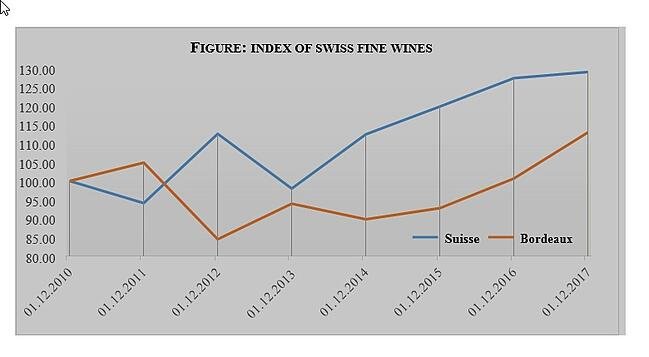By and large, Swiss wines have yet to gain recognition internationally or – for that matter – within Switzerland itself. Only three decades ago, calling Swiss wines ‘great’ would have made many connoisseurs roll their eyes. But over the last two decades or so, things have changed and now Swiss wines are gaining recognition.
Swiss wines have suffered something of a reputation deficit.
At the end of the 19th century, the phylloxera insect ravaged the vineyards of Europe, including Switzerland which was also very severely affected and, due to economic issues and a difficult climate in the early twentieth century, would never recover. Even today, only about a third of the land previously used for cultivating grapes pre-phylloxera, is used for vineyards. Only the Valais region has seen its vineyards expand during this period, due in part to its climate and location.
With the decline in the amount of land used for cultivating grapes came a fall in quality. After the second world war, customs barriers – which remained in place until Switzerland joined the World Trade Organization and the establishment of bilateral agreements with the European Union – effectively removed any real incentive for Swiss winemakers to focus on quality.
On the contrary, since demand exceeded production, with the exception of a few winemakers, the dominant strategy was to bet on quantity, not quality. Indeed, the 1982 vintage, characterized by ideal conditions (in Bordeaux, the vintage is considered exceptional), resulted in production volumes in Switzerland so out of the ordinary that wine producers used swimming pools to stock their wines.
As customs barriers began to fall in the 1990s, so too did wine consumption as consumers became more demanding. Competition was increasing as was the need to improve quality. Given the very high production costs in Switzerland due to high wage levels and mountainous terrain, the only viable positioning was to be in the upper segments of the market. Fortunately, climatic conditions and the soil are ideal for producing balanced and complex wines.
Winemakers increasingly shifted their production towards quality while trying to maintain relatively stable prices. Having loyal customers also helped and nowadays the quality of Swiss wines is widely recognized. But, that said, there is still a (small) stretch of road before they get the recognition they aspire to, especially as exports account for less than two percent of production.
Recognition – the signs are positive
As the euro regained ground and the prices of wines from nearby regions – Burgundy, the Rhone valley or Piedmont – rose sharply, Swiss wines became more competitive at 20 to 40 CHF.
In addition, a new generation of wine producers is looking beyond Switzerland’s borders. Nowadays it’s possible to find the Swiss wines made from Chasselas grapes on wine lists in Japan.
At the same time, the media have become increasingly interested in Swiss wines. Consider for example the list of the best wineries in Switzerland by Gault & Millau. The leading wine publication, The Wine Advocate, is now also regularly covering Swiss wines.
It helps as well that some producers such as
- M.-T. Chappaz (with several wines rated 99/100, Valais),
- D. Mercier (Valais) and
- D. Perrochet (Domaine de la Maison Carrée, Neuchâtel) have all gained recognition through their high rankings.
Plus Switzerland is being increasingly promoted as a leading wine tourism destination.
- For example, in a May 2018 article, Travel & Leisure cited Switzerland as the next major wine destination in Europe.
- Forbes, after declaring Lavaux "the most beautiful wine region in the world" in September 2016, highlighted Graubünden six months later, a region it calls "Little Burgundy".
- Vinum magazine recently praised the Vully and in particular four of its most ambitious areas: C. Vessaz (Cru de l’Hôpital), Javet & Javet, Domaine Chervet and F. Simonet (Petit Château).
So, there seem to be few obstacles on the path to greater recognition. Even the climate may be on the side of Swiss winemakers, with some studies suggesting that, so long as they are able to adapt, Swiss wines could be one of the beneficiaries of global warming.
INFOGRAPHIC: Swiss Wine, Anyone?
A bright future
There are already some stars in the making.
- The Gantenbein estate in Graubünden, which exports most of its output and has seen its prices soar, is considered an ‘icon’ of the Swiss vineyards by Gault & Millau.
- So too are producers such as J.P. Pellegrin (Geneva), L.-P. Bovard (Vaud), J. Tatasciore (Neuchâtel), M.-T. Chappaz and S. Maye (Valais), T. Donatsch (Graubünden), F. Gialdi and C. Zündel (Ticino).
- To this list, it would be wise to add the name of Zanini (Vinattieri Ticinesi and Castello Luigi, Ticino) which has taken on and beaten wines such as Cheval Blanc or Cos d'Estournel in blind tastings in terms of quality (but sell for around CHF 100).
The figure below shows how some of the most famous Swiss wines, auctioned at Steinfels between 2010 and 2017, have fared against first-growth Bordeaux wines. Swiss wine prices rose 30 percent over the period compared with the Bordeaux wines which gained by less than 15 percent.

A new generation of Swiss winemakers
On the heels of these wines is an entire generation of talented and confident winemakers who are aiming to produce wines to be among the great wines of the world. Instead of providing an exhaustive list of great winegrowers in this article, we will instead highlight three regions which, to us, seem to benefit from particularly favorable conditions:
- The Lavaux and particularly the Dézaley is now classified as a UNESCO heritage site. The king of grapes here is the Chasselas which distinguishes itself by its minerality and the great complexity that it develops while The Dézaley is already one of the great white wines of Europe. Some of the best known producers are: L. Bovard (already cited), B. Duboux, P.-L. Leyvras, L. Massy and B. Monachon.
- Graubünden offers unique conditions such as a rich soil which make it possible to produce great Pinot Noirs which have the elegance of the great Burgundy wines. Alongside Gantenbein and Donatsch (already mentioned), G. Fromm, I. Grünenfelder, J. Luzi (Sprecher von Bernegg), T. Studach, G.-B. Von Tscharner (Schloss Reichenau) are among the
- The sun-drenched Valais is made distinctive by its climate (dry with significant temperature variations) and its complex Alpine terroir. Several great wines have emerged, including Hermitage (Marsanne in France) and Petite Arvine (white), Cornalin and Syrah (red). Producers include M.-T. Chappaz, D. Mercier, S.Maye, M. Zuffrey (already mentioned), as well as V. Andrei, Domaine des Muses, Domaine d'Enfer, Clos de Tsampéhro and many others.
It is sometimes claimed that Switzerland produces the world's most expensive everyday wines and the cheapest fine wines. This may contain some element of truth but this could change. Everyday wines will certainly remain expensive but the prices of the great fine wines, as they gain in recognition, may well catch up with those of their neighbors. Fortunately there is still time to profit from this trend.




